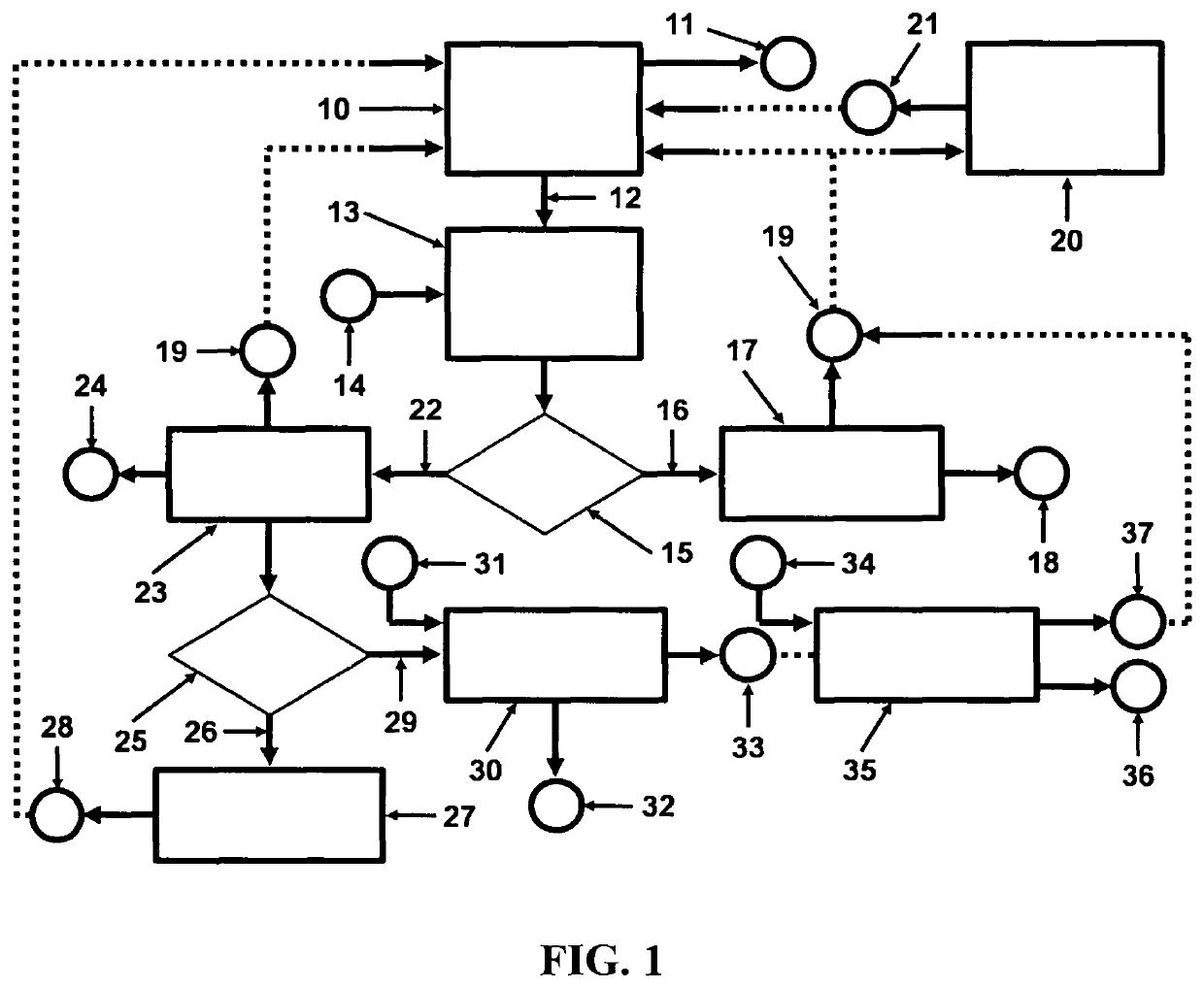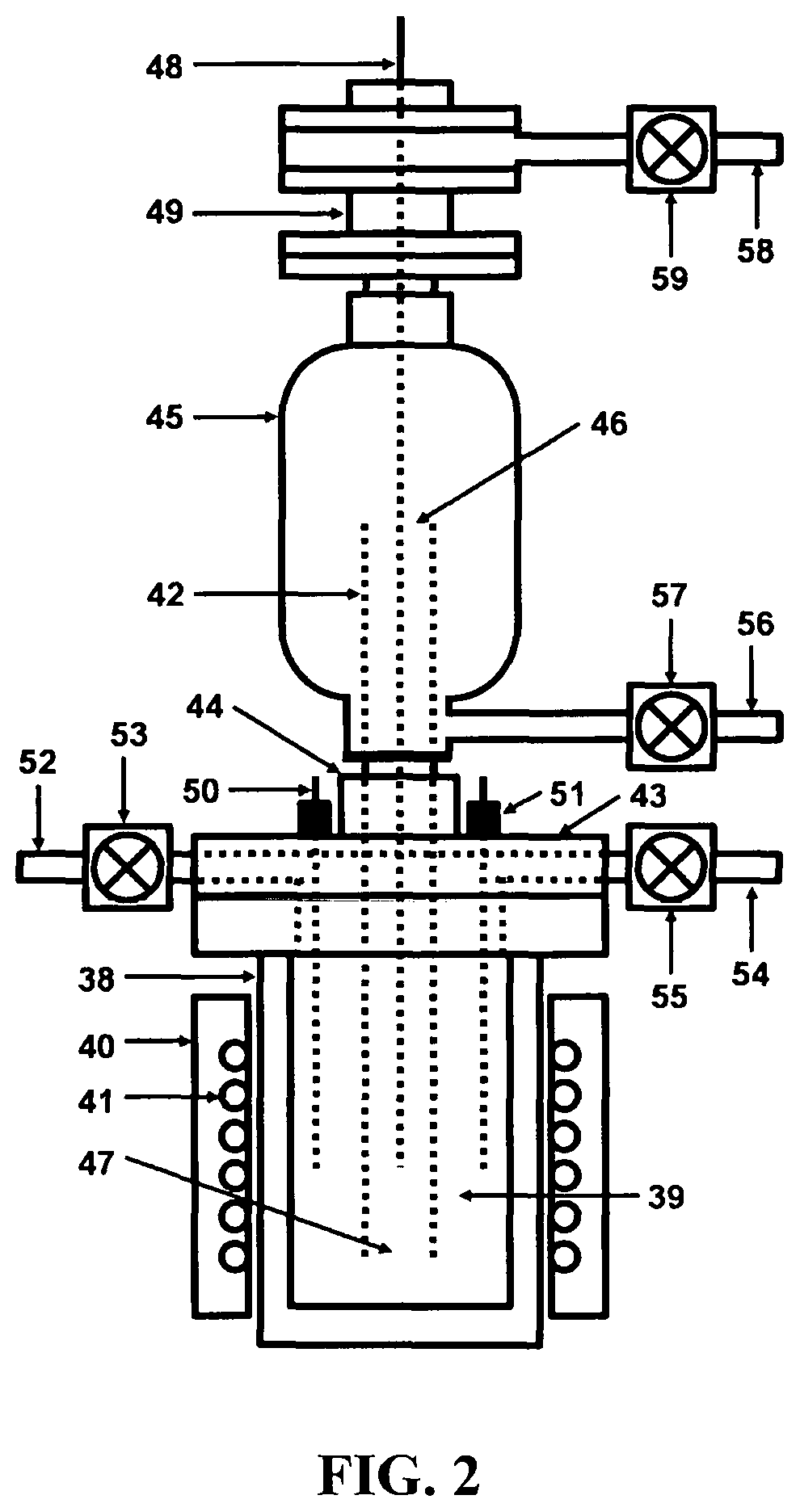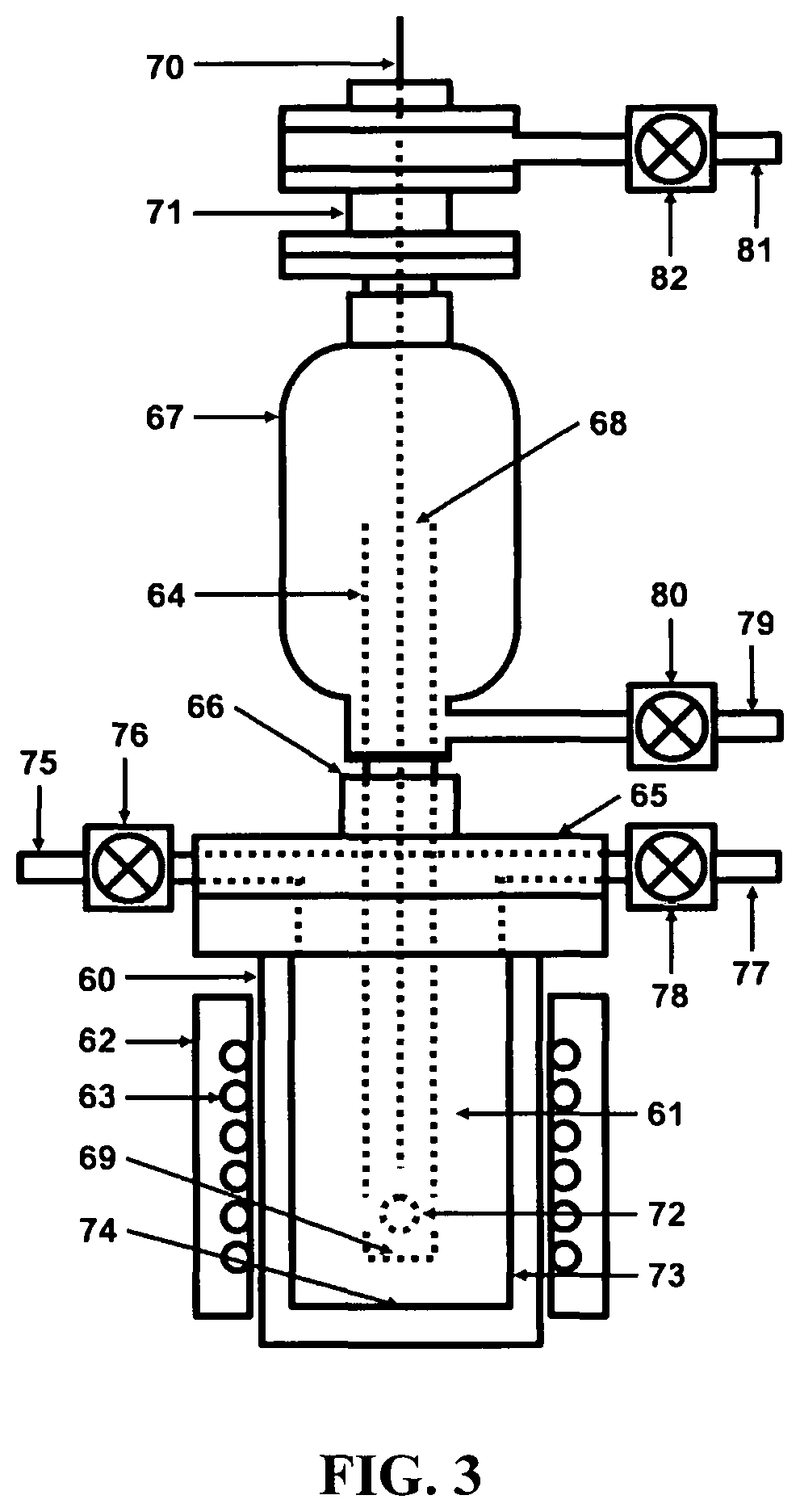Method and molten salt electrolytic cell for implementing a hydrogen fuel, sustainable, closed clean energy cycle on a large scale
a technology of electrolysis cell and molten salt, which is applied in the direction of cell components, final product manufacturing, sustainable manufacturing/processing, etc., can solve the problems of direct hydrogen storage methods, ti and ni, and human life on earth might be jeopardized,
- Summary
- Abstract
- Description
- Claims
- Application Information
AI Technical Summary
Benefits of technology
Problems solved by technology
Method used
Image
Examples
Embodiment Construction
[0034]Referring to FIG. 1, a depiction is shown of the hydrogen fuel, sustainable, closed clean energy cycle meant to be implemented on a large scale using the cost effective electrolytic cell capable of performing electrolysis on three types of molten salts individually including NaOH, NaCl, Na2CO3 or on a mixture of NaOH and NaCl, including selective electrolysis between NaOH and NaCl at temperatures ranging between 1223.15 K (950° C.) to 1323.15 K (1050° C.), well above the boiling point temperature of sodium (Na) metal. The hydrogen fuel, sustainable, closed clean energy cycle method of the present invention, in a preferred embodiment consists of a hydrogen generation apparatus 10, that implements the controlled chemical reaction between either ordinary salinated (sea) or desalinated (fresh) water (H2O) and sodium (Na) metal reactants over a wide temperature range to produce high purity hydrogen (H2) fuel 11, according to following chemical reaction:
2Na+2H2O→H2+2NaOH Reaction 1...
PUM
| Property | Measurement | Unit |
|---|---|---|
| temperatures | aaaaa | aaaaa |
| temperatures | aaaaa | aaaaa |
| operating current | aaaaa | aaaaa |
Abstract
Description
Claims
Application Information
 Login to View More
Login to View More - R&D
- Intellectual Property
- Life Sciences
- Materials
- Tech Scout
- Unparalleled Data Quality
- Higher Quality Content
- 60% Fewer Hallucinations
Browse by: Latest US Patents, China's latest patents, Technical Efficacy Thesaurus, Application Domain, Technology Topic, Popular Technical Reports.
© 2025 PatSnap. All rights reserved.Legal|Privacy policy|Modern Slavery Act Transparency Statement|Sitemap|About US| Contact US: help@patsnap.com



